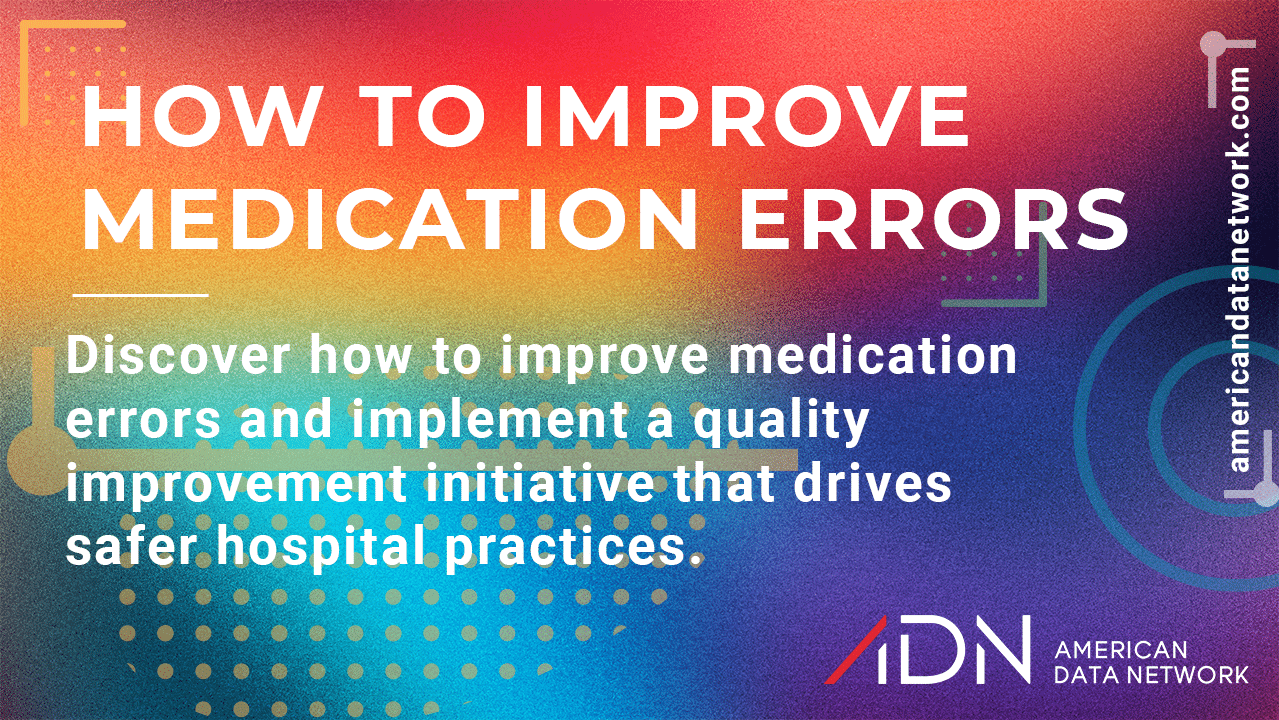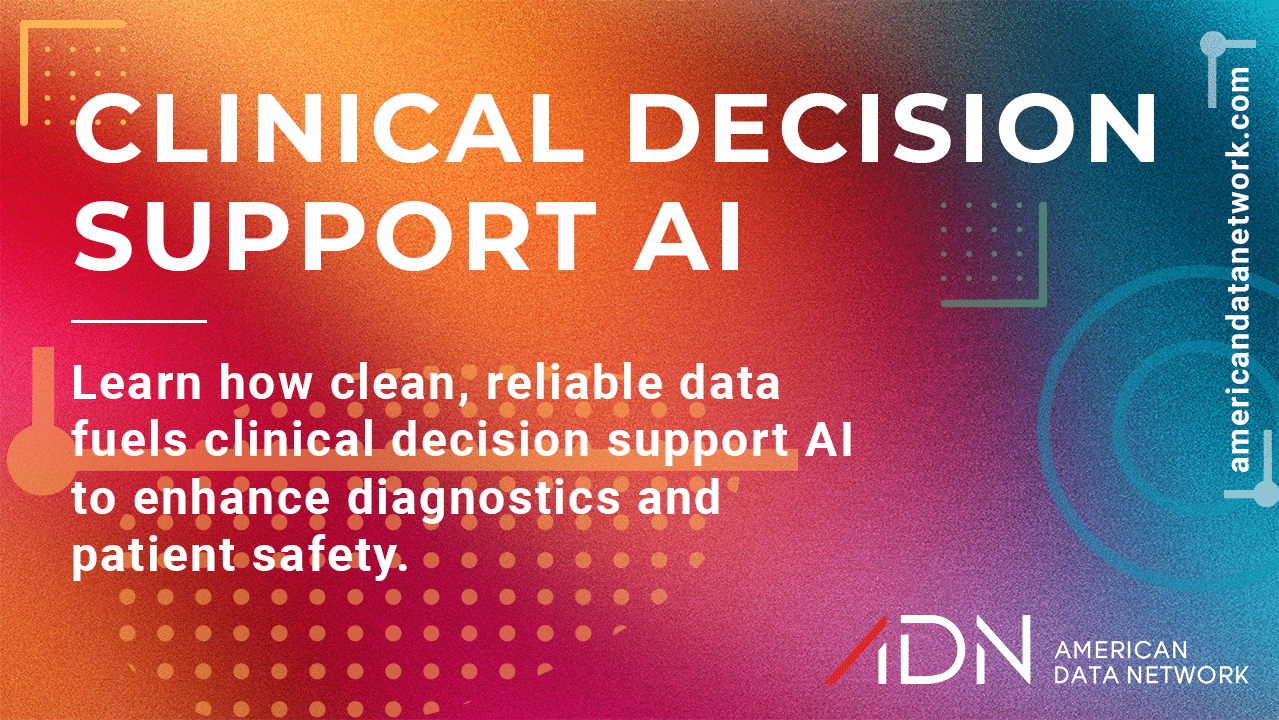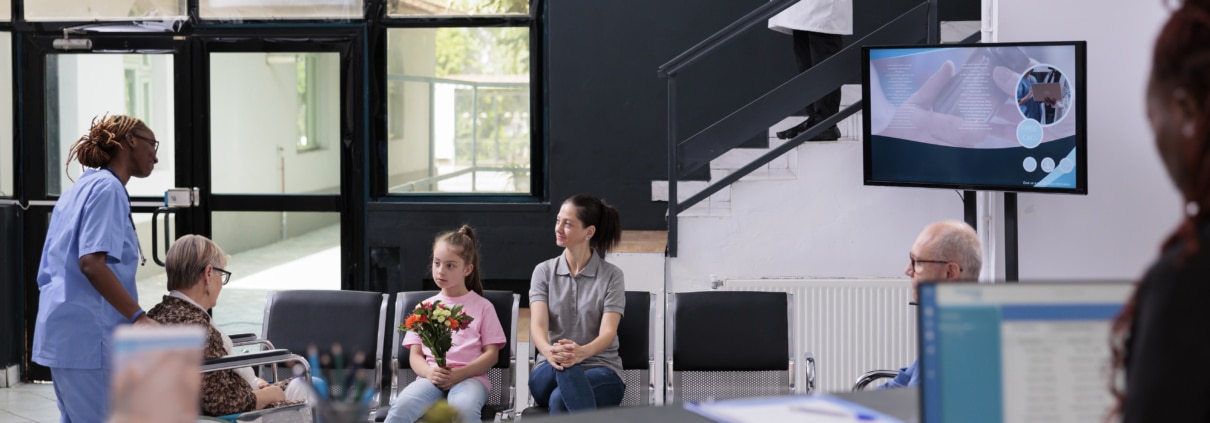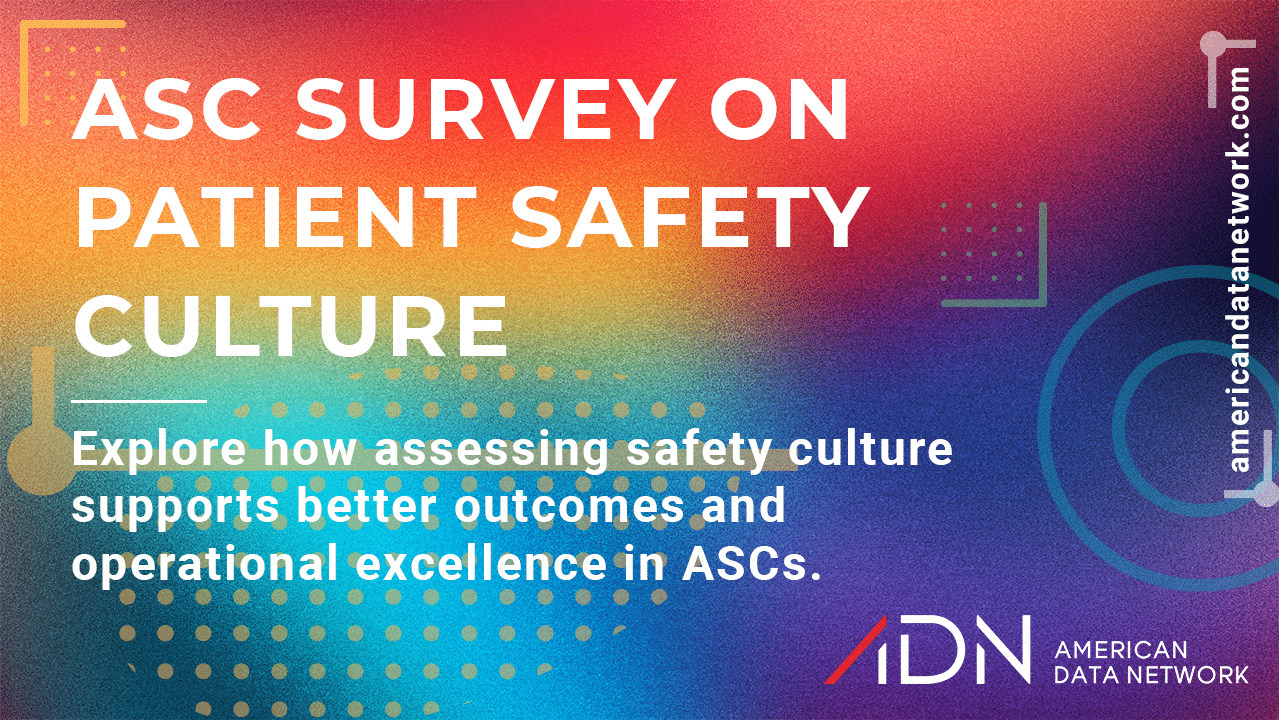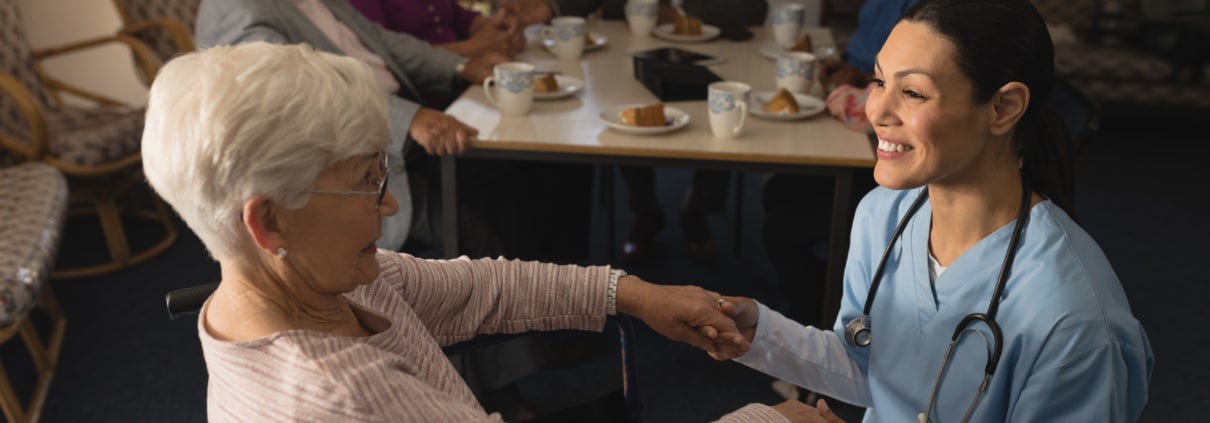Ultimate Guide to the National Patient Safety Goals 2025 (NPSGs)
An authoritative guide designed for healthcare leaders detailing evidence-based tactics for successfully implementing each of The Joint Commission’s 2025 National Patient Safety Goals.
Table of Contents
Hospital leaders – especially Directors or VPs of Quality and Patient Safety – can drive safer care by systematically implementing each National Patient Safety Goal. Below is an authoritative guide to the eight NPSGs for 2025, detailing each goal and element of performance, followed by actionable tactics supported by recent research, best-practice guidelines, and real-world implementation examples.
View the full list of 2025 National Patient Safety Goals and associated Elements of Performance.
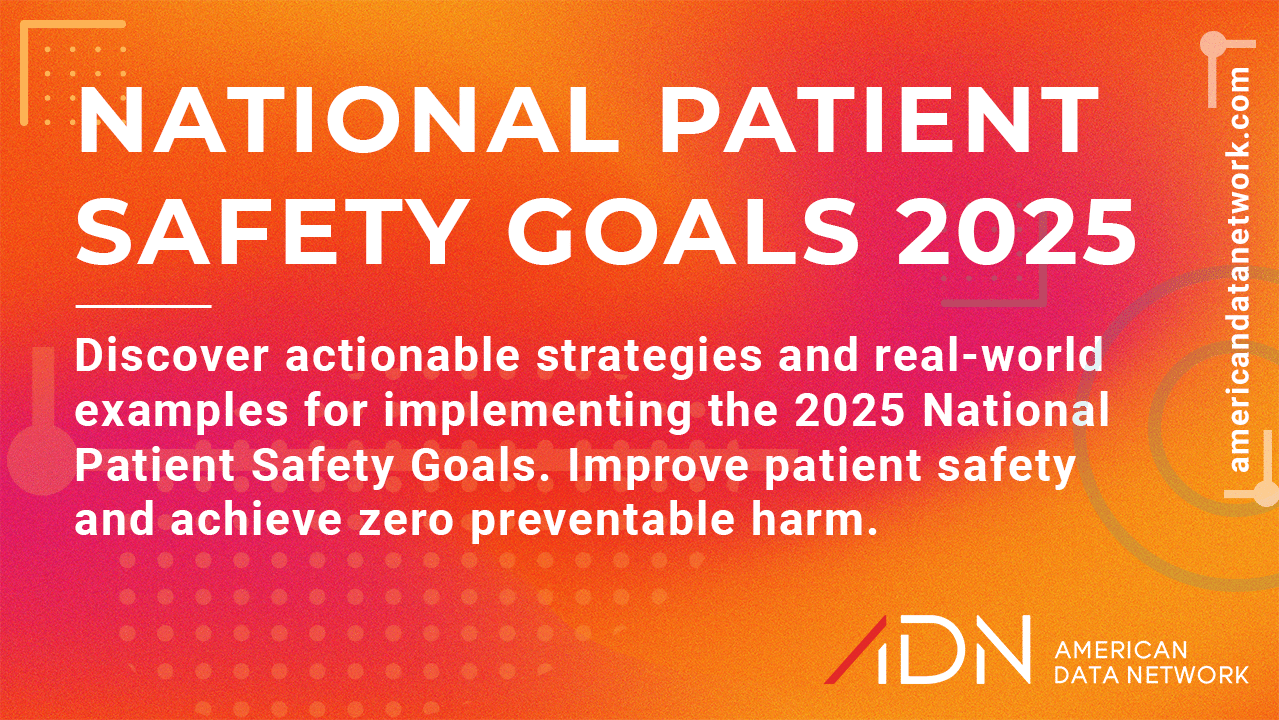
National Patient Safety Goals 2025: #1 Identify Patients Correctly
| 2025 National Patient Safety Goal: NPSG 01.01.01: | |
|---|---|
| Use at least two patient identifiers when providing care, treatment, and services. | |
| Element(s) of performance for NPSG 01.01.01 | |
| EP 1 | Use at least two patient identifiers when administering medications, blood, or blood components; when collecting blood samples and other specimens for clinical testing; and when providing treatments or procedures. The patient’s room number or physical location is not used as an identifier. (See also MM.05.01.09, EPs 7, 10; PC.02.01.01, EP 10) |
| EP 2 | Label containers used for blood and other specimens in the presence of the patient. (See also PC.02.01.01, EP 10) |
| EP 3 | Use distinct methods of identification for newborn patients. Note: Examples of methods to prevent misidentification may include the following:
|
Accurately identifying patients is foundational to preventing wrong-patient errors. This goal emphasizes using multiple patient identifiers and standardized processes so every test, medication, or procedure is matched to the correct person. Hospitals must eliminate identification mistakes by hardwiring verification steps into care workflows.
Use at Least Two Identifiers for Every Patient Encounter
Ensure staff always verify at least two distinct identifiers (for example, name and date of birth) before providing any care, administering medications, drawing labs, or performing procedures (Source: jointcommission.org). This practice is required by NPSG standards and has been effective in avoiding misidentifications. Electronic health records (EHRs) and wristband systems should make it easy to check identifiers, and never allow room numbers or physical location to be used as an identifier (to avoid mix-ups if patients move rooms) (Source: psnet.ahrq.gov).
Implement Barcode Scanning and Other Technology Aids
Use bar-code medication administration (BCMA) and patient wristband scanning systems to verify patient identity at the point of care. Scanning the patient’s ID band provides an electronic double-check before medications, blood products, or tests are given. A meta-analysis found that wristband barcode scanning reduced medical errors by 57.5% (Source: psnet.ahrq.gov). Many hospitals have reported sharp drops in wrong-patient errors after deploying barcode systems that prompt staff if the patient’s ID does not match the order.
Label Specimens and Diagnostics at the Bedside
Require that blood tubes, specimen containers, imaging requisitions, and other labeled materials be labeled in the presence of the patient immediately after collection. This ensures the label is attached to the correct patient’s sample. Incorporate two-identifier verification into the labeling process (e.g., patient states name/DOB while the phlebotomist labels the tube) to catch errors on the spot.
Related Reading: Specimen Study Helps 15 Hospitals Make Critical Process Changes to Prevent Errors
Address Look-Alike/Sound-Alike Names and Engage Patients in ID Checks
Flag patients with similar names in the EHR (e.g. alert banners for “J. Smith” vs “John Smith Jr.”) to prompt extra caution. For high-risk procedures (such as blood transfusions or surgeries), use an independent double-check – two clinicians should separately confirm the patient’s identity and agreement of identifiers. Encourage patients to participate by stating their name and DOB and speak up if an ID check does not occur. This patient engagement adds another layer of safety (Source: psnet.ahrq.gov). The Joint Commission’s Speak Up Patient Safety Program is another tactic that can help encourage patient engagement in their own care.
Audit and Train for Compliance
Continuously monitor compliance with patient ID protocols (e.g. random audits of whether two identifiers are used). Provide refresher training and share incident learnings. If near-misses occur (like a wrong patient near-miss caught by scanning), treat them as teaching opportunities. A culture of “zero tolerance” for skipping ID checks reinforces that every staff member is accountable for patient identification safety.
Leverage Patient Photos in EHRs to Prevent Misidentification
Integrating patient photographs into electronic health records provides an additional visual identifier to help staff quickly verify patient identity, especially in busy clinical settings. Recent studies have demonstrated that displaying patient photos in EHRs can significantly reduce wrong-patient order entry (WPOE) errors.
A notable study conducted at Brigham and Women’s Hospital found that the inclusion of patient photographs in EHRs led to a 35% reduction in wrong-patient order entry errors. Similarly, research published in JAMA Network Open reported that displaying patient photographs prominently in the EHR banner was associated with a significant decrease in the rate of wrong-patient orders.
Further, an evaluation from the Agency for Healthcare Research and Quality (AHRQ) highlighted patient photos as a noninterruptive decision-support tool, effectively improving patient identification without causing alert fatigue among healthcare providers (AHRQ Digital Healthcare Research).
Implementing patient photos can therefore serve as a practical, cost-effective approach to reinforcing patient identification accuracy, directly contributing to safer clinical care processes.
National Patient Safety Goals 2025: #2 Improve Staff Communication
| 2025 National Patient Safety Goal: NPSG 02.03.01: | |
|---|---|
| Report critical results of tests and diagnostic procedures on a timely basis. | |
| Element(s) of performance for NPSG 02.03.01 | |
| EP 1 | Develop and implement written procedures for managing the critical results of tests and diagnostic procedures that address the following:
Ⓓ Documentation is required. |
| EP 2 | Evaluate the timeliness of reporting the critical results of tests and diagnostic procedures. |
Effective communication among caregivers is critical for timely, safe care. This goal focuses on standardized communication of critical information – whether during handoffs, when conveying critical test results, or in daily interactions. Hospitals should implement structured communication tools and “closed-loop” confirmation practices to ensure information is reliably exchanged and understood.
Use Structured Hand-off Protocols Like I-PASS
Implement standardized patient handoff protocols for shift-to-shift handoffs and inter-departmental transfers. Tools like the I-PASS handoff bundle ensure that critical patient information is not omitted. A 2025 systematic review published in BMJ Quality & Safety evaluated structured handoff protocols. This review found moderate-certainty evidence that the I-PASS tool reduces medical errors and adverse events (Source: qualitysafety.bmj.com). Make these formats mandatory for both verbal handoffs and written handoff summaries in the EHR.
Report Critical Test Results in a Timely, “Closed-Loop” Manner
Establish a policy that critical lab values and diagnostic findings (e.g. dangerously high potassium or a radiology finding of a pneumothorax) are reported to the responsible provider within a set time frame. Use a reliable communication method that ensures receipt – for instance, a dedicated call center or an automated alert system that continuously tries providers until results are acknowledged (Source: cdc.gov). Many hospitals are adopting secure texting for critical results: one study demonstrated a reduction in average notification time from 11.3 minutes to 3.0 minutes by sending critical lab results directly to physicians’ smartphones, with 95% of providers preferring this over pager call-backs (Source: pmc.ncbi.nlm.nih.gov). Whatever the method, require that the receiving clinician confirms the result (closed-loop), and document the communication time.
Implement Read-Back Verification for Verbal Orders and Results
For any critical value relayed by phone or any telephone order, staff must perform a read-back – repeating the information received – to verify accuracy (Source: jointcommission.org). For example, if a lab calls a critical result, the nurse should write it down and read it back (“…confirming, potassium 2.8 for John Doe”). This practice, mandated by Joint Commission standards, has prevented innumerable errors caused by misheard information. Train all clinicians on read-back and enforce it as a standard operating procedure, especially in high-risk situations (critical lab values, verbal medication orders, etc.).
Leverage Team Training and Communication Coaching
Invest in programs like TeamSTEPPS, which is an evidence-based teamwork system aimed at improving communication and safety culture (Source: ahrq.gov). Conduct simulation exercises for high-risk scenarios (e.g. emergency response, OR to ICU handoff) to practice clear communication and teamwork. A formal TeamSTEPPS training or similar communication workshops can improve staff assertiveness to speak up about concerns and foster habits like checking back and clarifying questions. In a high-reliability organization, every team member should feel responsible for sharing critical information and confirming it was received – e.g., a nurse should feel empowered to call a physician if a critical report was not acknowledged within the policy timeframe.
Use Communication Tools for Special Situations
Implement condition-specific communication protocols, such as rapid response team alerts, critical lab result escalation trees, or patient deterioration watchlists. For example, an SBAR can be required when a nurse calls a physician about a patient’s urgent issue, to organize the information. Similarly, use pre-surgery briefings and post-op debriefings to make sure key information is transferred between teams. By institutionalizing these communication practices, staff know what to communicate, when, and how – reducing errors caused by miscommunication.
Enhance Critical Result Management with AI-Driven Alerts
Artificial intelligence (AI) tools are increasingly being utilized to prioritize and escalate critical test results automatically, ensuring timely provider acknowledgment. AI-driven communication systems can identify delays, trigger escalation protocols, and enhance the overall reliability of critical result reporting, thereby closing communication gaps.
Recent studies have demonstrated the effectiveness of AI in this domain. For instance, a study published in JAMA Internal Medicine found that implementing an AI-enabled early warning system was associated with a significant reduction in the risk of clinical deterioration and subsequent care escalation in hospitalized patients. The study concluded that such AI interventions could enhance patient safety by facilitating timely clinical responses. (Source: jamanetwork.com)
Another study at Mount Sinai Health System reported that hospitalized patients were 43% more likely to have their care escalated and significantly less likely to die if their care team received AI-generated alerts signaling adverse changes in their health. This underscores the potential of AI-driven alerts in improving patient outcomes. (Source: news-medical.net)
By integrating AI-driven alert systems into clinical workflows, healthcare providers can enhance the timeliness and effectiveness of their responses to critical patient data, ultimately improving patient outcomes and safety.
National Patient Safety Goals 2025: #3 Use Medicines Safely
| 2025 National Patient Safety Goal: NPSG 03.04.01: | |
|---|---|
Label all medications, medication containers, and other solutions on and off the sterile field in perioperative and other procedural settings. Note: Medication containers include syringes, medicine cups, and basins. | |
| Element(s) of performance for NPSG 03.04.01 | |
| EP 1 | In perioperative and other procedural settings both on and off the sterile field, label medications and solutions that are not immediately administered. This applies even if there is only one medication being used. Note: An immediately administered medication is one that an authorized staff member prepares or obtains, takes directly to a patient, and administers to that patient without any break in the process. |
| EP 2 | In perioperative and other procedural settings both on and off the sterile field, labeling occurs when any medication or solution is transferred from the original packaging to another container. |
| EP 3 | In perioperative and other procedural settings both on and off the sterile field, medication or solution labels include the following:
Note: The date and time are not necessary for short procedures, as defined by the hospital. |
| EP 4 | Verify all medication or solution labels both verbally and visually. Verification is done by two individuals qualified to participate in the procedure whenever the person preparing the medication or solution is not the person who will be administering it. |
| EP 5 | Label each medication or solution as soon as it is prepared, unless it is immediately administered. Note: An immediately administered medication is one that an authorized staff member prepares or obtains, takes directly to a patient, and administers to that patient without any break in the process. |
| 2025 National Patient Safety Goal: NPSG 03.05.01: | |
|---|---|
Reduce the likelihood of patient harm associated with the use of anticoagulant therapy. Note: This requirement does not apply to routine situations in which short-term prophylactic anticoagulation is used for preventing venous thromboembolism (for example, related to procedures or hospitalization). | |
| Element(s) of performance for NPSG 03.05.01 | |
| EP 2 | The hospital uses approved protocols and evidence-based practice guidelines for reversal of anticoagulation and management of bleeding events related to each anticoagulant medication. |
| EP 3 | The hospital uses approved protocols and evidence-based practice guidelines for perioperative management of all patients on oral anticoagulants. Note: Perioperative management may address the use of bridging medications, timing for stopping an anticoagulant, and timing and dosing for restarting an anticoagulant. |
| EP 7 | The hospital uses only oral unit-dose products, prefilled syringes, or premixed infusion bags when these types of products are available. Note: For pediatric patients, prefilled syringe products should be used only if specifically designed for children. |
| 2025 National Patient Safety Goal: NPSG 03.06.01: | |
|---|---|
| Maintain and communicate accurate patient medication information. | |
| Element(s) of performance for NPSG 03.06.01 | |
| EP 1 | Obtain information on the medications the patient is currently taking when they are admitted to the hospital or seen in an outpatient setting. This information is documented in a list or other format that is useful to those who manage medications. Note 1: Current medications include those taken at scheduled times and those taken on an as-needed basis. See the Glossary for a definition of medications. Note 2: It is often difficult to obtain complete information on current medications from a patient. A good faith effort to obtain this information from the patient and/or other sources will be considered as meeting the intent of the EP. Ⓓ Documentation is required. |
| EP 2 | Define the types of medication information (for example, name, dose, route, frequency, purpose) to be collected in non-24-hour settings. Note: Examples of non-24-hour settings include the emergency department, primary care, outpatient radiology, ambulatory surgery, and diagnostic settings. |
| EP 3 | Compare the medication information the patient brought to the hospital with the medications ordered for the patient by the hospital in order to identify and resolve discrepancies. Note: Discrepancies include omissions, duplications, contraindications, unclear information, and changes. A qualified individual, identified by the hospital, does the comparison. |
| EP 4 | Provide the patient (or family, caregiver, or support person as needed) with written information on the medications the patient should be taking when they are discharged from the hospital or at the end of an outpatient encounter (for example, name, dose, route, frequency, purpose). Ⓓ Documentation is required. |
| EP 3 | Explain the importance of managing medication information to the patient when they are discharged from the hospital or at the end of an outpatient encounter. Note: Examples include instructing the patient to give a list to their primary care provider; to update the information when medications are discontinued, doses are changed, or new medications (including over-the-counter products) are added; and to carry medication information at all times in the event of emergency situations. (For patient education on medications, refer to Standards MM.06.01.03, PC.02.03.01, and PC.04.01.05.) |
Medication safety efforts aim to prevent errors at all stages – ordering, dispensing, administering, and monitoring. The 2025 NPSG priorities for medication safety include proper labeling of medications, safe management of high-risk drugs (like anticoagulants), and thorough medication reconciliation during care transitions. Hospitals should adopt best practices and technology to minimize medication errors that could harm patients.
Label All Medications and Solutions, Especially in Procedural Settings
Unlabeled syringes, cups, or basins can lead to dangerous mix-ups. Require that every medication or solution is labeled with name, concentration, and expiration immediately after it is prepared or placed into a container, unless it’s going to be used instantly (Source: jointcommission.org). This is particularly vital in the operating room or other procedural areas where multiple drugs (saline, anesthetics, etc.) might be on a table – for example, a syringe on the sterile field must have a label if it’s not administered right away. The Joint Commission highlights medication labeling as a simple but critical step to avoid inadvertent drug swaps. Conduct regular audits in areas like ORs, cath labs, and EDs to ensure labeling compliance.
Implement Safeguards for High-Risk Medications (Especially Anticoagulants)
Anticoagulant therapy (like heparin or warfarin) is a common source of serious adverse drug events, so specific protocols are needed. Use standardized, evidence-based protocols for initiating and managing anticoagulation (Source: jointcommission.org) – for instance, weight-based heparin dosing with checks, warfarin nomograms, and specified INR monitoring frequency. Also put in place protocols for reversal of anticoagulation and management of bleeding complications (e.g., ready availability of vitamin K, protamine, or reversal agents for DOACs, guided by current guidelines). Many hospitals have created multidisciplinary anticoagulation stewardship programs that review all hospital anticoagulation orders, ensure dosing is appropriate, and follow up on lab results. Such programs have been shown to reduce anticoagulation errors and bleeding events. Additionally, provide patient-specific education on anticoagulants – patients should be counseled on dose timing, dietary interactions (for warfarin), signs of bleeding, and the importance of follow-up lab tests.
Ensure Medication Reconciliation at Every Transition of Care
Create a robust process to maintain and communicate accurate medication information for each patient (Source: jointcommission.org). On admission, collect a “best possible” medication history (consider using pharmacy staff or medication history technicians to improve accuracy). Compare that list to admission orders and resolve discrepancies. Similarly, at discharge, reconcile the hospital medications with pre-admission meds and produce an updated, clear medication list for the patient (and their next providers). This prevents inadvertent omissions or duplications (for example, continuing a home blood pressure medication that was held in hospital, or inadvertently prescribing two drugs in the same class). A pharmacy-led medication reconciliation program at one hospital reduced drug discrepancies significantly. Analysis of the discharge reconciliation process revealed that medication errors were reduced from 90% to 47% on the surgical unit and from 57% to 33% on the medicine unit (Source: academic.oup.com). Best practices include using EHR tools to flag changes, involving patients in verifying their med lists, and educating them on any new medications added or stopped. Monitor reconciliation completion rates and intervene if compliance falters.
Leverage Technology for Medication Safety
Utilize available technology to minimize human error. For instance, Barcode Medication Administration (BCMA), which involves scanning the patient and medication barcode before giving doses, ensures the “five rights” – right patient, drug, dose, time, route. Hospitals using BCMA have reported significant reductions in wrong-medication and wrong-patient errors (Source: psnet.ahrq.gov). Smart infusion pumps with dose-error reduction software should be used for continuous IV infusions (such as heparin drips) – the Joint Commission now requires programmable pumps for heparin to prevent infusion rate errors (Source: jointcommission.org). In the pharmacy, use automated dispensing cabinets with safety features (like alerts for look-alike/sound-alike drugs) and limit access to high-alert meds. Technology is not foolproof, so also address any workarounds (e.g., if nurses bypass scanning due to equipment issues, fix those issues and retrain staff rather than allowing workarounds to persist (Source: pmc.ncbi.nlm.nih.gov).
Educate Patients and Staff on Medication Safety
Ensure that patients are counseled about their medications – especially high-risk ones – in plain language. For example, a heart failure patient on a new anticoagulant should know why it’s needed and the bleeding precautions to take. Engage patients to be a final check (e.g., encourage them to speak up if a pill looks different than before). For staff, provide periodic training on medication safety, such as safe anticoagulation practices, opioid monitoring, or insulin management. Use real case studies of errors (anonymized) to reinforce lessons. A culture of safety encourages staff to report “near-miss” medication errors without fear – each near-miss is a chance to identify system weaknesses (like confusing labeling or pharmacy dispensing errors) and address them before harm occurs.
National Patient Safety Goals 2025: #4 Use Alarms Safely
| 2025 National Patient Safety Goal: NPSG 06.01.01: | |
|---|---|
| Improve the safety of clinical alarm systems. | |
| Element(s) of performance for NPSG 06.01.01 | |
| EP 1 | Leaders establish alarm system safety as a hospital priority. |
| EP 2 | Identify the most important alarm signals to manage based on the following:
(For more information on managing medical equipment risks, refer to Standard EC.02.04.01) |
| EP 3 | Establish policies and procedures for managing the alarms identified above that, at a minimum, address the following:
(For more information, refer to Standard EC.02.04.03) Ⓓ Documentation is required. |
Clinical alarm systems – cardiac monitors, pulse oximeters, IV pumps, ventilators, etc. – are crucial for patient monitoring, but alarm fatigue from excessive or non-actionable alarms is a well-documented safety hazard. This NPSG calls for hospitals to better manage alarm policies, ensuring that critical alarms are responded to while unnecessary alarms are reduced. The goal is a safer, quieter environment where clinicians do not become desensitized to important alarms.
Establish Alarm Safety as a Leadership Priority and Inventory Alarms
Hospital leadership should convene a multidisciplinary alarm management committee (including clinical engineers, nurses, physicians) to review all alarm-equipped devices in the hospital. Identify which alarm signals are most important for patient safety – for example, asystole or apnea alarms are life-critical, whereas an IV pump “infusion complete” alarm might be less urgent. By cataloguing alarm types and default settings, the team can prioritize which alarms require immediate response and which can be adjusted. The Joint Commission expects hospitals to designate the “most important alarms to manage” based on their own environment (Source: jointcommission.org). Focus on areas like intensive care, telemetry units, and OR/PACU where alarm overload is common.
Develop Policies to Reduce Non-Actionable Alarms and Prevent Alarm Fatigue
Create evidence-based policies for alarm parameters and default settings. This can include widening default alarm limits (within safe ranges) to reduce false alarms, tailoring alarm thresholds to the individual patient’s condition, and establishing delays or tiered escalation for certain alarms. For example, in some units pulse oximeter alarms for brief desaturations (a few seconds) can be delayed to alarm only if sustained, preventing constant chimes for self-correcting dips. Johns Hopkins Hospital and others have reported success by daily customization of cardiac monitor alarms (adjusting heart rate thresholds per patient) and eliminating duplicate alarms, resulting in a dramatic drop in alarm rate (Source: pmc.ncbi.nlm.nih.gov). All alarm settings changes should be done according to policy and tracked. The policy should also address who can modify alarm parameters (ensuring only competent staff do so, and critical alarms are not disabled). Regular maintenance of equipment to prevent nuisance alarms (e.g., ECG electrodes changed daily to reduce false leads-off alarms) is another tactic. A 2023 quality improvement study at Mayo Clinic implemented such interventions – stopping continuous monitoring on patients who didn’t need it and educating staff – and saw a ~17% reduction in total alarm load in just two months (Source: pmc.ncbi.nlm.nih.gov).
Train and Educate Staff about Proper Alarm Management
All clinical staff should be educated on the new alarm policies, the rationale behind them (reducing noise and improving safety), and their responsibility to respond promptly to alarms. Emphasize the dangers of alarm fatigue, where caregivers become desensitized – multiple studies link alarm overload to missed alarms and patient harm (Sources: sciencedirect.com, psnet.ahrq.gov). Training should cover how to properly set alarm parameters for each patient, how to distinguish alarm priority levels (if the system has escalating tones or visual cues), and the protocol for responding (e.g., what to do if an alarm is sounding and it’s not your patient). Simulation drills can help – for instance, on a telemetry unit, a drill where an alarm is ignored can be used to discuss how to ensure someone always “owns” responding. Importantly, foster a culture where silencing or pausing alarms inappropriately is unacceptable; staff should never permanently silence an alarm without addressing the patient condition or fixing the cause.
Improve Alarm Notification and Response Workflows
Consider technologies that route critical alarms directly to the responsible nurse or a central monitor watcher to ensure alarms are not missed. Some hospitals use middleware to send alarm alerts to a nurse’s smartphone or pager, reducing reliance on hearing the alarm sound. Assign accountability – e.g., a unit might have a dedicated monitor technician who notifies nurses of lethal arrhythmias immediately. Audit response times to critical alarms and adjust staffing or roles if needed (for example, if nurses are tied up and can’t respond, a “backup responder” should be alerted). Ensure that for every alarm that triggers, there is a clear action – even if it’s assessing the patient – so that alarms are never ignored. The Joint Commission in 2021 set national targets to eliminate alarm-related fatalities by improving these alarm response systems, underscoring how crucial this issue is. (Source: pmc.ncbi.nlm.nih.gov).
Deploy Alarm Analytics Dashboards and Predictive AI Tools
Advanced hospitals are enhancing patient safety by integrating real-time alarm data into clinical analytics dashboards. These dashboards consolidate alerts from various monitoring devices, enabling clinicians to quickly identify critical alarms and respond promptly. For instance, GE Healthcare’s alarm management solutions incorporate centralized monitoring units that streamline alarm notifications, reducing response times and improving patient outcomes. (Source: gehealthcare.com)
In addition to dashboards, predictive AI algorithms are being utilized to anticipate patient deterioration events. Nationwide Children’s Hospital implemented a machine learning tool known as the Deterioration Risk Index (DRI), which analyzes electronic medical records to identify patients at risk of clinical deterioration. Over an 18-month period, the use of DRI led to a more than two-thirds reduction in deterioration events among inpatients. (Source: childrenshospitals.org)
Similarly, Stanford Health Care employed an AI model to predict clinical deterioration events, such as unplanned ICU transfers, within a 6- to 18-hour window. This proactive approach resulted in a 20% reduction in such events, demonstrating the efficacy of predictive analytics in improving patient care. (Source: healthcareitnews.com)
By leveraging alarm analytics dashboards and predictive AI tools, healthcare providers can not only reduce alarm fatigue but also intervene earlier in patient care, thereby enhancing overall safety and outcomes.
Continuous Evaluation of Alarm Data
Monitor alarm metrics regularly – how many alarms per bed per day? What percentage are true vs false? Use this data to fine-tune your approaches. Success can be seen in places like UCSF, which reduced audible monitor alarms in ICUs by more than 60% through interdisciplinary alarm management and saw no adverse events as a result (Source: jointcommissionjournal.com). If alarm-related incidents or near misses occur, perform a root cause analysis: Was the alarm volume too low? Did staff assume “false alarm” incorrectly? Use these learnings to further adjust policies or retrain staff. Alarm safety improvement is an ongoing process, but it pays off in better patient outcomes and a calmer healing environment.
Related Reading: Improving Clinical Alarm Management: Guidance and Strategies
National Patient Safety Goals 2025: #5 Prevent Infection
| 2025 National Patient Safety Goal: NPSG 07.01.01: | |
|---|---|
| Comply with either the current Centers for Disease Control and Prevention (CDC) hand hygiene guidelines and/or the current World Health Organization (WHO) hand hygiene guidelines. | |
| Element(s) of performance for NPSG 07.01.01 | |
| EP 1 | Implement a program that follows categories IA, IB, and IC of either the current Centers for Disease Control and Prevention (CDC) and/or the current World Health Organization (WHO) hand hygiene guidelines. (See also IC.06.01.01, EP 3) |
| EP 2 | Set goals for improving compliance with hand hygiene guidelines. |
| EP 3 | Improve compliance with hand hygiene guidelines based on established goals. |
Healthcare-associated infections (HAIs) are a major patient safety risk, but they are often preventable through diligent infection prevention and control practices. This goal highlights adherence to proven guidelines (like hand hygiene compliance) and the use of evidence-based bundles to prevent device-related and surgical infections. Hospitals should treat infection prevention as a top priority, with the aim of zero preventable infections.
Enforce Rigorous Hand Hygiene Practices Hospital-Wide
- Adhere to CDC and WHO Guidelines: Implement and enforce a hand hygiene program following CDC or WHO guidelines, emphasizing the “5 Moments for Hand Hygiene”—before touching a patient, before clean/aseptic procedures, after body fluid exposure, after touching a patient, and after touching patient surroundings (CDC, 2023; WHO, 2023).
- Enhance Accessibility to Hand Hygiene Products: Ensure alcohol-based hand sanitizers and handwashing facilities are readily accessible at patient care points and high-traffic areas throughout the hospital to facilitate compliance.
- Compliance Monitoring and Feedback: Employ electronic monitoring systems or regular observational audits to track compliance rates. Provide staff with immediate, specific feedback to encourage continuous improvement in hand hygiene adherence.
Leadership Engagement and Staff Training on Hand Hygiene
- Leadership Accountability: Hospital leadership should visibly support and prioritize hand hygiene compliance, incorporating it into institutional safety culture.
- Ongoing Education: Offer regular, evidence-based educational programs to reinforce correct hand hygiene practices among all healthcare staff. Training should address common compliance barriers and emphasize the critical role of hand hygiene in infection prevention.
Patient and Visitor Engagement in Hand Hygiene
- Involve Patients in Hand Hygiene: Encourage patients to participate actively in infection prevention by asking healthcare providers if they’ve cleaned their hands before care. Provide visible reminders in patient rooms and waiting areas.
- Visitor Hand Hygiene: Ensure visitors understand the importance of hand hygiene through clear signage and readily accessible hand hygiene stations at hospital entrances, patient rooms, and communal areas.
Set Clear, Measurable Hand Hygiene Goals
- Establish and Track Compliance Targets: Define clear compliance goals (e.g., greater than 90% adherence hospital-wide) and publicly display unit-level performance. Regularly celebrate improvements to sustain momentum and demonstrate the importance of hand hygiene to staff.
- Continuous Improvement Initiatives: Use hand hygiene compliance data to inform ongoing quality improvement efforts. Address gaps promptly by identifying and mitigating barriers to compliance, such as workload pressures or inadequate product availability.
By focusing specifically on these rigorous hand hygiene practices, hospitals can significantly reduce the incidence of healthcare-associated infections, protect patients, and enhance overall safety outcomes.
National Patient Safety Goals 2025: #6 Reduce the Risk for Suicide
| 2025 National Patient Safety Goal: NPSG 15.01.01: | |
|---|---|
Reduce the risk for suicide. Note: EPs 2–7 apply to patients in psychiatric hospitals or patients being evaluated or treated for behavioral health conditions as their primary reason for care. In addition, EPs 3–7 apply to all patients who express suicidal ideation during the course of care. | |
| Element(s) of performance for NPSG 15.01.01 | |
| EP 1 | For psychiatric hospitals and psychiatric units in general hospitals: The hospital conducts an environmental risk assessment that identifies features in the physical environment that could be used to attempt suicide; the hospital takes necessary action to minimize the risk(s) (for example, removal of anchor points, door hinges, and hooks that can be used for hanging). For nonpsychiatric units in general hospitals: The organization implements procedures to mitigate the risk of suicide for patients at high risk for suicide, such as one-to-one monitoring, removing objects that pose a risk for self-harm if they can be removed without adversely affecting the patient’s medical care, assessing objects brought into a room by visitors, and using safe transportation procedures when moving patients to other parts of the hospital. Note: Nonpsychiatric units in general hospitals do not need to be ligature resistant. Nevertheless, these facilities should routinely assess clinical areas to identify objects that could be used for self-harm and remove those objects, when possible, from the area around a patient who has been identified as high risk for suicide. This information can be used for training staff who monitor high-risk patients (for example, developing checklists to help staff remember which equipment should be removed when possible). Ⓓ Documentation is required. |
| EP 2 | Screen all patients for suicidal ideation who are being evaluated or treated for behavioral health conditions as their primary reason for care using a validated screening tool. Note: The Joint Commission requires screening for suicidal ideation using a validated tool starting at age 12 and above. |
| EP 3 | Use an evidence-based process to conduct a suicide assessment of patients who have screened positive for suicidal ideation. The assessment directly asks about suicidal ideation, plan, intent, suicidal or self-harm behaviors, risk factors, and protective factors. Note: EPs 2 and 3 can be satisfied through the use of a single process or instrument that simultaneously screens patients for suicidal ideation and assesses the severity of suicidal ideation. |
| EP 4 | Document patients’ overall level of risk for suicide and the plan to mitigate the risk for suicide. |
| EP 5 | Follow written policies and procedures addressing the care of patients identified as at risk for suicide. At a minimum, these should include the following:
Ⓓ Documentation is required. |
| EP 6 | Follow written policies and procedures for counseling and follow-up care at discharge for patients identified as at risk for suicide. |
| EP 7 | Monitor implementation and effectiveness of policies and procedures for screening, assessment, and management of patients at risk for suicide and take action as needed to improve compliance. |
Hospitals must proactively identify patients at risk for harm – particularly those at risk of suicide or self-harm. This goal involves systematic screening for risk factors (like suicidal ideation) and taking action to mitigate those risks in the hospital environment and beyond. By recognizing at-risk individuals early, hospitals can prevent tragic events and ensure patients get the help they need.
Screen All Patients for Suicide Risk when Indicated Using Validated Tools
For hospitals that treat behavioral health conditions or emergency patients with psychiatric complaints, implement a suicide risk screening on admission (or initial evaluation) for those populations (Source: jointcommission.org). The Joint Commission requires that all patients being treated for emotional or behavioral disorders be screened for suicidal ideation. Many hospitals have expanded this to universal screening in emergency departments and inpatient units – using tools like the Columbia-Suicide Severity Rating Scale (C-SSRS) or the PHQ-9 depression questionnaire (which has suicide ideation questions). The screening should be done by trained staff in a sensitive manner, and positive screens should trigger an immediate, more thorough risk assessment by a qualified professional. In one landmark study (ED-SAFE), implementing suicide screening in the ER and follow-up care led to a 30% reduction in suicide attempts among those patients in the following year – demonstrating the life-saving potential of systematic screening and intervention (Source: jamanetwork.com).
Conduct a Thorough Risk Assessment and Level-of-Risk Stratification
If a patient screens positive or otherwise is suspected to be at risk (e.g., expresses suicidal thoughts, has recent suicide attempt, or shows self-harm behavior), perform a formal suicide risk assessment using a standardized approach. This includes evaluating the patient’s suicidal ideation frequency and intensity, intentions or plan, past attempts, mental health and substance use history, and access to means (like firearms or medications) (Source: jointcommission.org). Document the findings and an immediate safety plan/mitigation strategy. For example, a high-risk patient might be placed on one-to-one observation, in a ligature-resistant room, with removal of any personal belongings that could be used for self-harm. Moderate risk might warrant 15 minute checks and secured unit placement. The assessment should also consider other safety risks inherent in the population – for instance, in older adults, risk of falls; in those on opioids, risk of overdose. Addressing patient safety risks means looking at each individual’s context.
Create a Safe Environment for At-Risk Patients
For patients identified as high risk for suicide, take immediate actions to minimize environmental hazards. This includes using ligature-resistant rooms or safe rooms whenever possible (rooms with no anchor points for hanging, tamper-proof fixtures, etc.), removing unnecessary medical equipment, cords, or objects that could be used for self-harm, and ensuring supervision. Train staff to perform a safety sweep of the room and patient’s belongings. Many hospitals have a checklist for making a room “suicide safe.” In psychiatric units, maintaining a ligature-resistant environment is mandatory under Joint Commission standards. Additionally, adjust care processes: e.g., no unsupervised passes, monitored bathrooms, plastic utensils for meals, etc., as needed for safety. Assign sitters or 1:1 observers for patients who require continuous observation (per your risk protocol). All staff (nurses, techs, sitters) should be briefed on the patient’s risk and what to monitor (e.g., patient trying to obtain sharp objects).
Engage Mental Health Expertise and Initiate Treatment
Identifying the risk is only the first step; ensure that at-risk patients get expert evaluation and intervention promptly. This might mean psychiatry consults for patients on medical units who voice suicidal ideation, or evaluation by a licensed mental health professional in the ED. Start interventions such as safety planning (a brief intervention where the provider works with the patient on coping strategies and sources of support) and, when appropriate, begin or adjust medications for underlying conditions (e.g., antidepressants, anti-anxiety meds). Sometimes just the act of a compassionate suicide risk assessment and engagement in care can reduce a patient’s immediate sense of crisis. For patients with substance use contributing to self-harm risk, involve addiction medicine as well. Train staff on de-escalation and empathetic communication, so that at-risk patients feel heard and safe, not judged – this can diffuse potential violence or agitation, which is also a safety risk.
Provide Continuous Observation and Frequent Re-assessment
Suicide risk can fluctuate, so re-assess patients periodically (for instance, each shift or each day) and adjust the precautions accordingly (Source: jointcommission.org). If a patient’s mood improves or they contract for safety, you might be able to step down from 1:1 observation to frequent checks, but do so cautiously and with team consensus. Conversely, if a patient becomes more agitated or hopeless, intensify precautions. Always communicate risk status at handoffs (e.g., a banner in the chart “Suicide Risk – high” and verbal sign-out highlighting it). Maintain observation until the patient is formally cleared by mental health professionals.
Ensure Safe Discharge and Follow-up for Patients At Risk
A very vulnerable time is when a patient leaves the hospital. Before discharge, create a personalized safety plan: this includes recognizing warning signs, listing coping strategies, people or agencies to contact in a crisis, and removing access to lethal means (for example, involving family to temporarily lock up firearms or unused medications at home). Provide the patient and family with emergency contact information such as the 988 Suicide & Crisis Lifeline, local crisis center numbers, and arrange prompt follow-up appointments with outpatient behavioral health providers. If possible, make a connection while still inpatient – some hospitals do a warm handoff by having a case manager or peer support specialist schedule the first therapy session or ensure the patient has a follow-up within days of discharge. Research shows post-discharge follow-up (calls or visits) significantly reduces suicide rates (Source: psychiatryonline.org). Therefore, consider programs where staff reach out within 24-48 hours post-discharge to check on the patient’s well-being and remind them of their support. Document the discharge plan and educate the patient’s family on what to do if risk escalates again. By taking these steps, hospitals can extend the safety net beyond their walls, during the critical transition period.
National Patient Safety Goals 2025: #7 Improve Health Care Equity
| 2025 National Patient Safety Goal: NPSG 16.01.01: | |
|---|---|
| Improving health care equity for the hospital’s patients is a quality and safety priority. | |
| Element(s) of performance for NPSG 16.01.01 | |
| EP 1 | The hospital designates an individual(s) to lead activities to improve health care equity for the hospital’s patients. Note: Leading the hospital’s activities to improve health care equity may be an individual’s primary role or part of a broader set of responsibilities. |
| EP 2 | The hospital assesses the patient’s health-related social needs (HRSNs) and provides information about community resources and support services. Note 1: Hospitals determine which HRSNs to include in the patient assessment. Examples of a patient’s HRSNs may include the following:
Note 2: HRSNs may be identified for a representative sample of the hospital’s patients or for all the hospital’s patients. Ⓓ Documentation is required. |
| EP 3 | The hospital identifies health care disparities in its patient population by stratifying quality and safety data using the sociodemographic characteristics of the hospital’s patients. Note 1: Hospitals may focus on areas with known health care disparities identified in the scientific literature (for example, organ transplantation, maternal care, diabetes management) or select measures that affect all patients (for example, experience of care and communication). Note 2: Hospitals determine which sociodemographic characteristics to use for stratification analyses. Examples of sociodemographic characteristics may include the following:
Ⓓ Documentation is required. |
| EP 4 | The hospital develops a written action plan that describes how it will improve health care equity by addressing at least one of the health care disparities identified in its patient population. Ⓓ Documentation is required. |
| EP 5 | The hospital acts when it does not achieve or sustain the goal(s) in its action plan to improve health care equity. Ⓓ Documentation is required. |
| EP 6 | At least annually, the hospital informs key stakeholders, including leaders, licensed practitioners, and staff, about its progress to improve health care equity. |
Achieving equity in healthcare is now recognized as a patient safety imperative – meaning that every patient should receive high-quality, safe care regardless of their race, ethnicity, language, or socioeconomic status. This new NPSG (effective 2023) requires hospitals to identify disparities in their outcomes and take action to improve equity. In practice, this involves analyzing data to find care gaps, engaging leadership in an equity strategy, addressing patients’ social needs, and implementing targeted improvements for underserved groups.
National data show, for example, Black patients received worse care than White patients on 36% of patient safety metrics, and low-income households fared worse than higher-income households on 33% of safety metrics (Source: psnet.ahrq.gov). These inequities highlight the need for focused equity interventions.
Use Data to Identify Care Disparities in Your Hospital
Start by stratifying key quality and safety data by patients’ sociodemographic characteristics to uncover any inequities. For example, analyze infection rates, readmissions, surgical complications, or patient experience scores by race, ethnicity, primary language, gender, insurance type, etc. This analysis may reveal gaps – perhaps surgical infection rates are higher in patients with limited English proficiency, or pain control is worse in minority patients. Your hospital’s own data will pinpoint where to focus. Use a robust data approach (your quality analytics team can use EHR data, safety event reports, patient surveys, etc.). Importantly, involve frontline staff and community representatives in discussing the data – they can provide context for why a disparity might exist and ideas for addressing it.
Designate an Equity Leader and Develop a Strategic Plan
Improving equity must be an organizational priority. Appoint a dedicated leader or team responsible for health equity initiatives (Source: ihs.gov). Many hospitals now have a Chief Equity Officer or an interdisciplinary health equity committee. This leader/coordinator will drive efforts such as staff education, data monitoring, and improvement projects. Next, develop a written action plan to address at least one identified disparity, as per Joint Commission requirements. The plan should clearly state: the specific disparity you’re targeting (e.g., higher 30-day readmission rates in Medicaid patients), the population of focus, a measurable goal, strategies or interventions to achieve improvement, and how progress will be monitored. For instance, if data show that non-English speaking patients have lower medication understanding and higher readmissions, your plan might involve providing multilingual pharmacist counseling and follow-up calls to those patients, aiming to cut readmissions by X%. Make sure leadership allocates resources for these efforts – improvement won’t happen without buy-in from the top. Some hospitals have incorporated equity metrics into their quality dashboards and executive performance goals, underscoring that equitable care is as important as any clinical target.
Address Patients’ Health-Related Social Needs as Part of Care
Recognize that social determinants of health (SDOH) – like lack of transportation, food insecurity, or unstable housing – can directly impact patient safety and outcomes. Integrate a process to assess patients’ social needs and connect them with resources (Source: ihs.gov). For example, upon admission or in the ED, patients could be screened with a brief SDOH questionnaire (many validated tools exist) to identify needs such as difficulty affording medications or unsafe living conditions. If needs are identified, have a system to provide information or referrals to community resources (food banks, housing assistance, free transportation services, etc.). Under NPSG 16, hospitals are required to at least assess some patient population for health-related social needs and provide resource information. By systematically addressing social needs, you not only demonstrate respect and caring, but you may prevent safety issues (e.g., a patient won’t skip follow-up because they lacked a ride, or won’t split pills due to cost – factors that disproportionately affect vulnerable groups). Ensure staff (nurses, case managers, social workers) are trained and empowered to act on these screenings.
Implement Targeted Interventions to Reduce Identified Disparities
Based on the disparities you find, launch quality improvement projects just as you would for any clinical issue – but tailor them to the affected population. If data show fewer minorities receive core measures in cardiac care, initiate an equity-focused review of those cases to identify gaps (maybe implicit bias or communication barriers) and intervene (through training or process changes). Set specific goals (e.g., eliminate the gap in blood pressure control between Black and White patients within 1 year) and measure outcomes continuously (Source: ihs.gov). Use the Plan-Do-Study-Act (PDSA) cycle or other QI frameworks for these projects. Celebrate improvements and communicate them hospital-wide to show that equity efforts yield results.
Educate and Equip the Workforce to Provide Equitable Care
Improving equity also means tackling issues like implicit bias and cultural competency among staff. Conduct training sessions on recognizing implicit biases in healthcare – for example, how pain might be underestimated in certain racial groups due to stereotypes (Source: psnet.ahrq.gov). Training should provide clinicians with tools to ensure all patients are heard and respected (use of interpreter services for language needs, understanding cultural health beliefs, etc.). Encourage diverse hiring and include patient representatives from the community in advisory councils to bring forward issues minority patients face. Another strategy is standardizing care protocols to minimize biased decisions – if everyone gets the same fall assessment or the same discharge checklist, there’s less room for subjective differences in care. The Joint Commission’s new standards also require that leaders periodically inform key stakeholders (like the Board, community groups) about the progress in improving health equity. Transparency and accountability go a long way. Some hospitals publish an annual equity report with performance data stratified by race/ethnicity, along with actions taken – this level of openness can motivate continued improvement and trust with the community.
Sustain and Spread Successful Equity Initiatives
Once you’ve demonstrated improvement in one disparity, integrate those practices into standard operations and then tackle the next disparity. For instance, if you successfully improved diabetes control in one clinic for a vulnerable population by using patient navigators, consider spreading that model to other clinics or for other chronic diseases. Hardwire equity by adding equity considerations into all safety and quality committees (e.g., if a new sepsis protocol is developed, ensure it works for non-English speakers, etc.). The goal is to embed an equity lens so thoroughly that it becomes part of everyone’s daily work – analogous to infection control or medication safety. By systematically reducing disparities, hospitals will not only meet the NPSG requirements but will truly ensure all patients are safer.
National Patient Safety Goals 2025: #8 Prevent Mistakes in Surgery
| 2025 National Patient Safety Goal: UP 01.01.01: | |
|---|---|
| Conduct a preprocedure verification process. | |
| Element(s) of performance for UP 01.01.01 | |
| EP 1 | Implement a preprocedure process to verify the correct procedure, for the correct patient, at the correct site. Note: The patient is involved in the verification process when possible. |
| EP 2 | Identify the items that must be available for the procedure and use a standardized list to verify their availability. At a minimum, these items include the following:
Note: The expectation of this element of performance is that the standardized list is available and is used consistently during the preprocedure verification. It is not necessary to document that the standardized list was used for each patient. Ⓓ Documentation is required. |
| 2025 National Patient Safety Goal: UP 01.02.01: | |
|---|---|
| Mark the procedure site. | |
| Element(s) of performance for UP 01.02.01 | |
| EP 1 | Identify those procedures that require marking of the incision or insertion site. At a minimum, sites are marked when there is more than one possible location for the procedure and when performing the procedure in a different location would negatively affect quality or safety. Note: For spinal procedures, in addition to preoperative skin marking of the general spinal region, special intraoperative imaging techniques may be used for locating and marking the exact vertebral level. |
| EP 2 | Mark the procedure site before the procedure is performed and, if possible, with the patient involved. |
| EP 3 | The procedure site is marked by a licensed practitioner who is ultimately accountable for the procedure and will be present when the procedure is performed. In limited circumstances, the licensed practitioner may delegate site marking to an individual who is permitted by the organization to participate in the procedure and has the following qualifications:
Note: The hospital’s leaders define the limited circumstances (if any) in which site marking may be delegated to an individual meeting these qualifications. |
| EP 4 | The method of marking the site and the type of mark is unambiguous and is used consistently throughout the hospital. Note: The mark is made at or near the procedure site and is sufficiently permanent to be visible after skin preparation and draping. Adhesive markers are not the sole means of marking the site. |
| EP 5 | A written, alternative process is in place for patients who refuse site marking or when it is technically or anatomically impossible or impractical to mark the site (for example, mucosal surfaces or perineum). Note: Examples of other situations that involve alternative processes include:
Ⓓ Documentation is required. |
| 2025 National Patient Safety Goal: UP 01.03.01: | |
|---|---|
| A time-out is performed before the procedure. | |
| Element(s) of performance for UP 01.03.01 | |
| EP 1 | Conduct a time-out immediately before starting the invasive procedure or making the incision. |
| EP 2 | The time-out has the following characteristics:
|
| EP 3 | When two or more procedures are being performed on the same patient, and the person performing the procedure changes, perform a time-out before each procedure is initiated. |
| EP 4 | During the time-out, the team members agree, at a minimum, on the following:
|
| EP 5 | Document the completion of the time-out. Note: The hospital determines the amount and type of documentation. Ⓓ Documentation is required. |
Wrong-site, wrong-procedure, or wrong-patient surgeries are catastrophic events that are fully preventable with rigorous protocols. The Universal Protocol and the WHO Surgical Safety Checklist provide a framework to eliminate surgical mistakes. This goal entails a series of pre-operative and intra-operative checks – from verifying the patient and procedure, to marking the surgical site, to taking a final “time-out” pause – as well as fostering teamwork in the OR. When reliably implemented, these practices have proven to significantly reduce surgical errors and complications.
Conduct a Pre-Procedure Verification (“Surgical Checklist”) for Every Case
Well before the patient enters the operating room (for example, in the pre-op holding area), have a standardized verification process to confirm all the relevant documents and studies are available and correct (Source: jointcommission.org). This includes verifying the patient’s identity with two identifiers, the procedure planned, the site/side of the procedure, and that consent forms have been signed and match the intended surgery. Also verify that any required implants, special equipment, or imaging results are ready. Many hospitals use a checklist for this phase – often a nurse, with the patient involved, will review each item (e.g., “Mrs. Jones, we have you scheduled for a left knee arthroscopy, is that correct?”). Resolving discrepancies at this stage (such as discovering a consent form is missing or the x-ray isn’t in the room) prevents downstream errors. As part of the Universal Protocol, this pre-procedure verification is a mandatory step and should involve all relevant team members (pre-op nurse, anesthesiologist, surgeon) as appropriate.
Mark the Surgical Site Unambiguously
For procedures involving laterality (left vs right), multiple structures (e.g., fingers, limbs), or levels (spinal surgery), the correct site must be marked on the patient’s body before the surgery. The Joint Commission requires that the mark be made by a licensed provider who will be involved in the procedure (often the surgeon) and that it should be sufficiently permanent to be visible after skin prep (usually marking with a surgical marker “YES” or surgeon’s initials on the correct site). For example, if operating on the left eye, the surgeon should mark “left eye” or initials above that eye. Do not mark non-operative sites (to avoid confusion) except in cases like a possible level spine surgery (then initial the level that was verified by x-ray). Have a policy on acceptable site marking – some use an “X” not to operate on or a line pointing to the correct vertebral level after radiographic confirmation, etc. The patient (if awake and able) should be involved: “We are marking the left knee you’re having surgery on, correct?” Marking has prevented many a near-miss – if a clinician is about to prep the right side and sees no mark (because the left was the correct side and is marked), they know to stop. Special cases: for teeth, a dental diagram is used; for some minimal access procedures (endoscopy), site marking might not apply – have those exceptions defined. Overall, site marking is a simple but powerful visual communication that everyone in the OR can see, serving as a final check against wrong-site errors.
Perform a “Time-Out” in the OR Immediately Before Incision
The surgical time-out is a final pause performed in the OR with the entire surgical team immediately before the procedure begins (for example, after anesthesia induction and patient positioning, but before the incision). During the time-out, all activity should pause and the team verbally confirms critical information: correct patient identity, correct site and side (pointing to the mark), correct procedure to be done, and as applicable any special considerations (having the correct implants, antibiotics given, patient positioning, etc.)(Source: jointcommission.org). The surgeon, anesthesiologist, circulating nurse, scrub tech – everyone participates and must be in agreement. This active communication time-out is required by the Universal Protocol and is extremely effective in catching any last-minute discrepancies. For instance, if the consent said left hip but the OR schedule said right hip, this is the moment someone might speak up. It is important that the time-out is done consistently for every case – even minor procedures – and that it is not pro forma. Encourage a culture where anyone in the OR can halt the start of surgery if something doesn’t sound right. Document the time-out in the record (many ORs have a checklist sheet or an EHR flow sheet to tick off that the time-out was completed and what was verified).
Adopt the WHO Surgical Safety Checklist for Comprehensive Safety
The WHO 19-item Surgical Safety Checklist (which includes steps for sign-in, time-out, and sign-out) covers not only patient/procedure verification but also other safety measures (like ensuring prophylactic antibiotics are given, counting instruments and sponges, and discussing post-op plans). Many hospitals worldwide have implemented it and seen significant drops in post-op complication rates and mortality – studies showed a 30%+ reduction in surgical complications and deaths after checklist adoption (Source: who.int). Incorporate the checklist into your workflow: for example, a “sign-in” phase in the anesthetic room (checking allergies, airway risk, etc.), the “time-out” in OR (patient, site, procedure, etc.), and a “sign-out” before the team leaves the OR (discussing specimen labeling, instrument counts correct, any equipment problems, and post-op management plans). This creates multiple layers of verification and promotes teamwork.
If your hospital already uses a checklist, periodically audit its completion and quality – ensure it’s done with meaning, not just ticking boxes. Engage surgeons by sharing data or stories of checklist catches (near-misses averted), so they champion its use rather than see it as bureaucratic.
Foster a Culture of Speaking Up in the OR
Even with protocols, human factors matter. Encourage surgeons and OR staff to adopt a team mentality – where any team member can question a discrepancy (like “Is this definitely the correct implant size?” or “Did we confirm the spinal level with x-ray?”) without hesitation. Research shows communication issues are a root cause of many surgical errors. Techniques from crew resource management (CRM) can be applied: having briefings and debriefings, flattening hierarchy so that even a junior nurse feels comfortable stopping the line if something is amiss. Some hospitals conduct after-action reviews for near-misses (like catching a wrong-level spine case before cutting) to learn how to improve processes and to positively reinforce the individuals who spoke up. Over time, as these practices become ingrained, wrong-site surgeries and other “never events” can truly become relics of the past. In fact, many organizations have gone years without a wrong-site surgery due to rigorous adherence to these protocols. Consistency is key – every patient, every time – no shortcuts, even when the schedule is running behind or for “quick cases.”
Your Roadmap to Safer Care: Implementing the National Patient Safety Goals 2025
By diligently implementing each of these 2025 National Patient Safety Goals with leadership support, staff training, patient engagement, and continuous improvement, hospitals can measurably enhance patient safety. Each goal’s tactics – from the basics of patient identification and hand hygiene to the newer focus on health equity – are backed by evidence and real-world success stories. As healthcare leaders, insisting on these best practices and providing the resources and accountability to carry them out will drive your organization toward zero harm. Remember, achieving excellence in patient safety is an ongoing journey of learning and improving – but with these targeted efforts in 2025, you will be closer to the ultimate goal of zero preventable patient harm.



